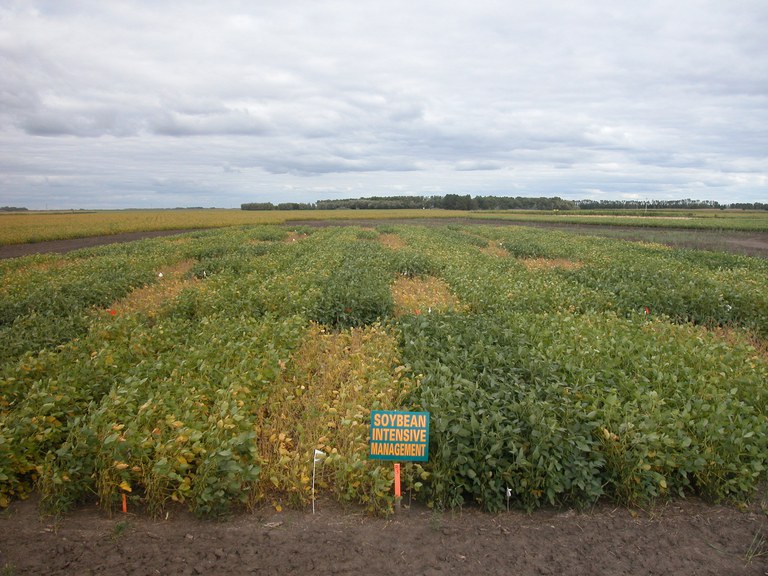Soybean Planting Rate and Row Spacing
North Dakota State University has a long tradition of recommending the establishment of a soybean population of 150,000 plants per acre across row spacings. This recommendation continues to exist across the state to optimize soybean seed yield.

An intensive management soybean trial at the NDSU Carrington Research Extension Center.
This article summarizes the evaluation of data generated by 37 NDSU soybean planting rate and row spacing field trials conducted during 2008 through 2019. A total of 390 data points (observations) comprise the database. Seed yield was normalized for each trial by comparing the treatment average to the overall trial mean. The treatment average within each individual trial was divided by the trial mean and multiplied by 100 to get the relative yield in percent (the trial mean was set at 100%). With all yield data on the same scale (relative percent), data were evaluated across trials.
The relative soybean seed yield among planting rates, ranging from 80,000 to 220,000 pure live seeds (PLS) per acre, averaged across row spacings and all North Dakota site-years is shown in Figure 1. Planting rates of 125,000 to 200,000 PLS per acre generally provided above-average yield, with 169,000 PLS per acre optimizing yield. In Eastern trials, 8% of planted PLS per acre did not develop into viable soybean plants. Assuming that on average 8% of the PLS does not result in established plants and the general planting rate that provided highest yield across all trials was 169,000 PLS, we can expect about 155,000 established plants to maximize yield.
Figure 1. Soybean relative seed yield with plating rates averaged across row spacings in North Dakota.
The relative soybean seed yield among row spacings, ranging from 7- to 30-inches, averaged across planting rates and all North Dakota site-years is shown in Figure 2. Based on the regression equation, the relative yield increases by 0.5% for each inch the spacing is narrower from 30 inches. Narrow rows (less than 15 inches) provided above-average yield, with 7-inch rows based on the regression equation providing about 106% yield compared to trial averages of 100%.
Figure 2. Soybean relative seed yield with planting rates averaged across row spacings in eastern North Dakota.
A pending NDSU Extension circular that contains details regarding the summary of the NDSU soybean planting rate and row spacing trials, including results from eastern and western regions of North Dakota, will be available later during May.
Greg Endres
Gregory.Endres@ndsu.edu
Extension Agronomist


